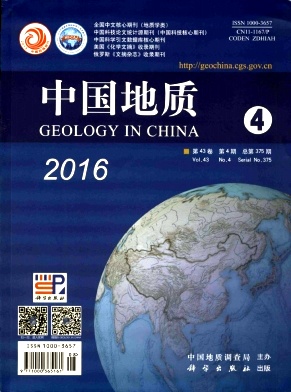ZHANG Yun-peng, REN Jian-ye, WANG Shan, ZHAO Xue-qin. The sedimentary evidence for the existence of unified basin in Early Cretaceous in Dasanjiang basin group, Northeast China[J]. Geology in China, 2016, (4): 1280-1290. doi: 10.12029/gc20160414
| Citation: |
ZHANG Yun-peng, REN Jian-ye, WANG Shan, ZHAO Xue-qin. The sedimentary evidence for the existence of unified basin in Early Cretaceous in Dasanjiang basin group, Northeast China[J]. Geology in China, 2016, (4): 1280-1290. doi: 10.12029/gc20160414
|
The sedimentary evidence for the existence of unified basin in Early Cretaceous in Dasanjiang basin group, Northeast China
-
1.
Xi'an Geological Survey Center, China Geological Survey, Xi'an 710054, Shaanxi, China
-
2.
Faculty of Earth Resources, China University of Geosciences, Wuhan 430074, Hubei, China
-
3.
Research Institute of Petroleum Exploration & Development, Beijing 100083, China
-
4.
School of Environment and Resource, Southwest University of Science and Technology, Mianyang 621010, Sichuan, China
-
Abstract
Located in eastern Heilongjiang Province, the Dasanjiang basin group has experienced multiphase tectonic movement since Mesozoic, and formed a dozen of separated residual basins. Due to the lack of key evidence, there exists controversy concerning existence or nonexistence of a unified basin in Dasanjiang area during the early Cretaceous. The field geological survey and drilling core observation show that the basin lacks marginal facies, and is dominated by the delta plain subfacies and shore shallow lake subfacies. Paleocurrent recovery and heavy mineral characteristics show that the study area mainly has three major provenances existent respectively in the west and northwest, east and southeast, concentrated from the periphery to the center in space. The seismic reflection characteristics show that the lower Cretaceous strata have typical faulted-depression composite structure, and at the same time, the strata of the basin did not show obvious thinning from the center to the edge during the depression period. So the boundary faults of the basin mostly should be thrust faults which reformed the basin in later period. All the evidence strongly support the argument that the Dasanjiang area was a unified basin in the early Cretaceous. The results obtained by the authors provide an important basis for the restoration of prototype basin of Dasanjiang basin group and also offer a reference for the oil and gas resources substitution and exploration in Northeast China.
-

-
-
Access History







 DownLoad:
DownLoad: